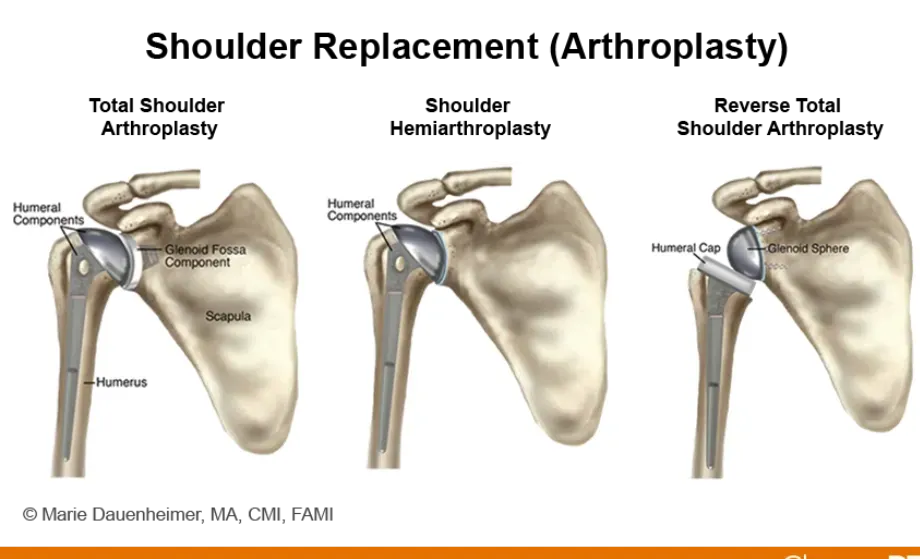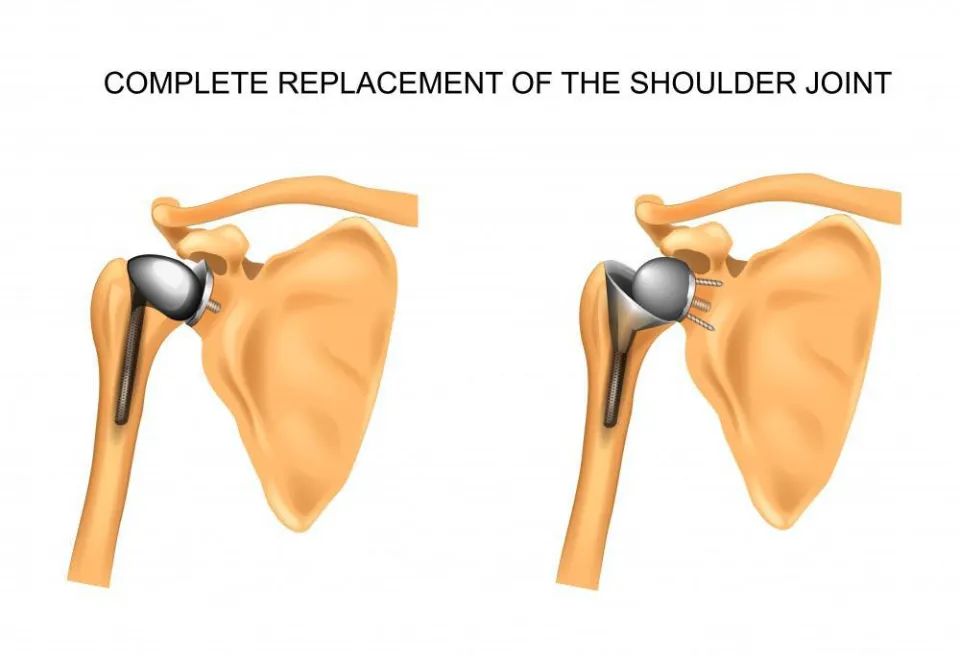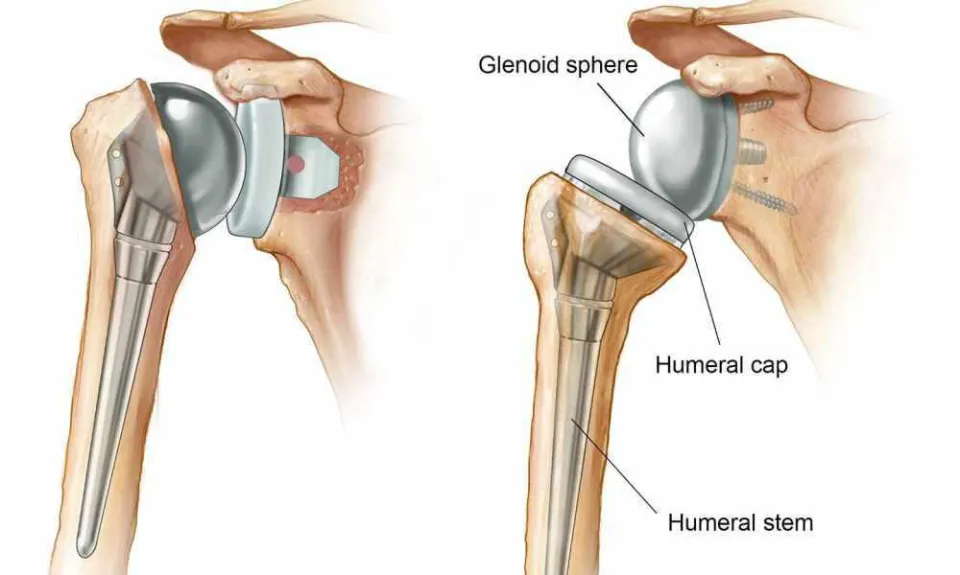A surgical procedure called a total shoulder replacement may be beneficial if you suffer from severe pain and loss of shoulder mobility as a result of shoulder osteoarthritis. The operation aims to replace the worn-out shoulder joint with a metal, ceramic, or plastic one that is more functional. Your shoulder and arm can then move and perform more normally thanks to this joint.
Working with a physical therapist could be advantageous if you had a total shoulder replacement. When receiving physical therapy (PT) for a total shoulder replacement, your shoulder’s strength, function, and range of motion are all improved while the pain is decreased. Making the best decisions for your recovery can be aided by being aware of what to anticipate from physical therapy after your total shoulder surgery.
Total Shoulder Replacement Surgery
Your upper arm will be cut during a total shoulder replacement. The surgeon will then use specialized tools to remove the arthritic joint after exposing your shoulder joint. It will be necessary to remove both the glenoid socket of your shoulder blade and the ball-shaped humerus at the end of your upper arm bone.
There are two different types of shoulder replacements: a standard total shoulder replacement and a reverse total shoulder replacement. If your shoulder’s rotator cuff muscles are still in tact, the standard total shoulder procedure is completed. Reverse total shoulder replacement is used if the rotator cuff is torn and cannot be repaired. This means that the metal socket will be secured to the end of your humerus and the metal ball is placed on your shoulder blade.

The subscapularis tendon in the front of the shoulder is typically separated during surgery, and the tendon is then repaired after the procedure is complete. It is common for patients to be given specific instructions regarding the amount of passive external rotation permitted and the avoidance of active internal rotation for the first six weeks. Not all surgeons take this precaution; however, many do. Some surgeons perform replacement without separating the subscap. Each type of shoulder replacement involves specific rehabilitation techniques.
Your shoulder will be sutured back together after the new metal shoulder joint has been implanted, and your recovery can start after your shoulder has been immobilized in a sling.
There will be some downtime and recovery following the procedure. You will follow up with your doctor on a regular basis, and they will recommend a physical therapist for rehabilitation. This usually happens two to four weeks after surgery.
How to Recover Quickly from Shoulder Replacement Surgery?
Physical Therapy
Movements of the arm and shoulder are crucial for healing. In most cases, your orthopedic surgeon or another medical professional will start working with you and teaching you specific exercises to regain full arm and shoulder movement the first day following surgery.
Your physician will give you a list of exercises you can perform to maintain your muscle strength without endangering the replacement shoulder. In order to keep your elbow and shoulder from becoming stiff, you must perform these exercises. Although initially challenging, they will get simpler every day. While you are in the hospital, a physical therapist will also come by and review these exercises with you. You will go to physical therapy once or twice a day while you’re in the hospital. Your preparation for your return home will also be assisted by an occupational therapist and a nurse discharge planner.
Post-Hospital Care
Depending on how well you recover, you will either be released from the hospital on the second or third day after surgery. Following your orthopedic surgeon’s recommendations during the first few weeks following surgery is crucial once you have returned home.

Medications
You will receive prescriptions for aspirin, which helps prevent blood clots, anti-inflammatory drugs, and painkillers. Only take the pain reliever if you are in pain. Take the anti-inflammatory medication as directed.
Caring for Your Incision
Along with the wound on the front of your shoulder, stitches will be present. At your first follow-up appointment a week after your surgery, these will be taken out. If your incision swells, drains, turns red, hurts, or becomes painful, call your surgeon right away. If your temperature rises to over 101 degrees Fahrenheit, call your doctor right away.
Physical Activity
The recovery process requires physical activity. Maintain doing the exercises you picked up at the hospital. You will receive a physical therapy exercise schedule to follow before leaving the hospital. You must safeguard the shoulder for the next three to six weeks so that the muscles can recover. Within the first or second week after being released from the hospital, you should schedule a therapy session. The physical therapist might demonstrate or assist you in performing particular exercises to strengthen your arm and shoulder during the first few weeks of recovery.
How Long is Physical Therapy?
While each person’s recovery time is different, on average the shoulder takes three to six months to fully recover, and sometimes strength and range of motion can continue to improve for up to a year.
Your surgeon will advise you to wear a sling or soft, padded brace to protect the shoulder during the initial phase of recovery, which can last three to six weeks after surgery. Naturally, the sling is taken off to bathe, change into clean clothes, and perform simple exercises.
Regaining regular shoulder motion and function is the main goal of the following phase. You will commence strengthening exercises three months following surgery.
The majority of daily activities can usually be resumed by patients two to six weeks after shoulder replacement surgery. Returning to more strenuous activities like freestyle swimming, tennis, or golf could take up to six months.
Summary
When your shoulder has fully recovered six weeks after surgery to replace it, you can probably start driving again. Depending on how much physical activity your job requires, your surgeon might also permit you to go back to work at this point. Through physical therapy, you’ll also begin to build up your shoulder.



